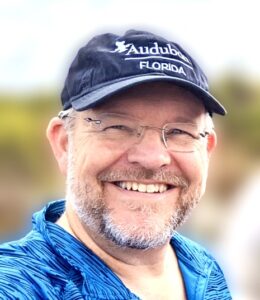By Chris Farrell, Audubon Florida
Being a professional conservationist is not all hip waders and binoculars. Just as often, it’s the methodical review of draft rules and management plans or scrutinizing the science of regulatory agencies.
It was just this kind of glamorous work I was involved in last month –reviewing the St. Johns Water Management District Governing Board’s Agenda — when an item on the consent agenda caught my eye.
It was a request for approval of the District’s new surplus lands list. The accompanying information included 18,000 acres of state-owned parcels deemed to be no longer needed for conservation.

They were labelled only by the property ID numbers, but no maps. They would be put up for sale.
Conservation lands protect water quality, provide habitat, and create recreation opportunities for visitors and locals alike. If the item was on the consent agenda, it was likely already well vetted.
Nonetheless, I’ve always found it is better to be safe than sorry, and as I started checking the parcel numbers against property appraisers’ records, an alarming pattern emerged.
I quickly determined the District had produced a profoundly flawed list. It included parcels in Gainesville’s Paynes Prairie Preserve State Park, Central Florida’s Hal Scott Preserve, acreage on rivers, near important wetlands, and in important wildlife corridors.
Audubon’s team alerted other conservation groups and engaged with District leadership immediately, who to their credit, agreed almost immediately to pull the item from the meeting agenda entirely. They have since assured us they have no immediate plans to sell any conservation lands, and promised a better, more transparent process in the future.
This comes as a relief. Water management districts across Florida own thousands and thousands of acres of conservation lands that provide benefits we as Floridians can sometimes take for granted. Conservation lands support not only imperiled species, but those we hope to keep plentiful.
They capture and clean water – reducing runoff and thus providing valuable flood protection for our communities. They give us places to recreate and support a sustainable and desirable segment of the tourism industry. Simply put, conservation lands protect us, sustain us, and improve our quality of life – with benefits greatly outweighing their cost.
Their capacity to hold water and mitigate the damage from storms is especially important in a state frequently hit by hurricanes, events that will increase in both frequency and intensity as the climate continues to warm.
In fact, a robust network of conservation lands is necessary for both plants and wildlife that need to migrate upslope, away from sea level rise. Many of the uplands of today will be the wetlands of tomorrow.
For Florida’s water management districts to successfully preserve our water resources, they must protect and preserve natural landscapes. In recent years, the districts have seen their staff shrink and budgets have not kept pace with the demands of our state.
We need them to be well staffed and funded, and have a modernized view of what it will take to protect Florida in this new century of sea level rise and 23 million residents. Without those resources? Mistakes happen.
Chris Farrell is a Northeast Florida staff biologist and policy expert for Audubon Florida, the state’s oldest statewide conservation nonprofit. In this capacity, he uses sound science to advance common sense policy solutions to challenges facing the region’s water, wildlife, habitat, and resiliency. Check out our website here and be sure tosubscribe to our newsletters.
“The Invading Sea” is the opinion arm of the Florida Climate Reporting Network, a collaborative of news organizations across the state focusing on the threats posed by the warming climate.



